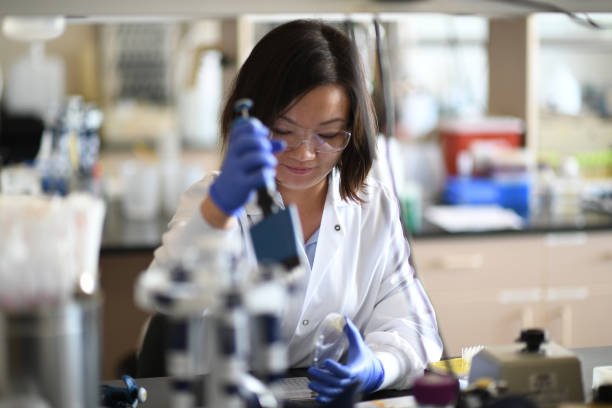UK News
‘Disease X’: UK scientists discover pandemic vaccinations.

Scientists in the UK have initiated the development of vaccines as a precautionary measure to safeguard against a potential future pandemic triggered by an unidentified “Disease X”.
A team of over 200 scientists is currently conducting the work at the high-security Porton Down laboratory complex in Wiltshire, which is owned by the government.
A list of animal viruses that have the potential to infect humans and spread globally in the future has been compiled.
The identity of the disease that will cause the next pandemic is uncertain, which is why it is simply referred to as “Disease X”.
The UK Health Security Agency guided Sky News on a tour of the site, where they showcased the operations conducted in the high-containment labs.
Professor Dame Jenny Harries, who leads the UK Health Security Agency (UKHSA), emphasised the importance of proactive preparation in her statement to Sky News. She highlighted the need to undertake necessary groundwork in advance to effectively handle any potential future outbreaks of a new disease or pathogen, often referred to as “Disease X.”
We hope to be able to prevent a pandemic. However, in the event that we are unable to avoid responding, we have already initiated the process of developing vaccines and therapeutics to combat the issue.
The Vaccine Development and Evaluation Centre at Porton Down has undergone expansion in order to accommodate additional work.
Initially, the main focus was on COVID and evaluating the efficacy of vaccines against emerging variants.
Currently, the scientists at the centre are engaged in the surveillance of various high-risk pathogens such as bird flu, monkeypox, and hantavirus, which is transmitted by rodents.
An early achievement worth mentioning is the development of the world’s first vaccine for Crimean-Congo haemorrhagic fever, a tick-borne disease with a mortality rate of 30%.
The jab is currently in the early stages of clinical trials, and it is anticipated that 24 volunteers will participate in the testing process.
As global temperatures continue to rise, the disease is increasingly prevalent in Europe, and there have been reports of travellers returning to the UK with the infection.
According to Professor Harries, the combination of climate change and population shifts increases the likelihood of another pandemic.
She stated that there is an increasing global risk.
One contributing factor to this phenomenon is urbanisation, which can lead to the transmission of viruses from animals to humans, as exemplified by the case of bird flu.
Some of the reasons for this phenomenon can be attributed to climate change, as it causes the migration of ticks and mosquitoes to regions that were previously cold but are now experiencing rising temperatures.
Therefore, this is an emerging risk agenda. However, we can utilise our scientific knowledge to actively mitigate the negative effects caused by humans.
The most probable pandemic threat at present is believed to be bird flu.
According to the Royal Society for the Protection of Birds, a more aggressive strain of the H5N1 virus has spread globally, resulting in the death of at least 30,000 seabirds in the UK this summer.
Additionally, there is evidence indicating a restricted transmission in certain mammalian species.
Additionally, it has been reported that four individuals employed in poultry farms in the UK have tested positive for the virus. However, their symptoms were relatively mild.
The UKHSA has initiated the monitoring of individuals who have had close contact with birds, as a precautionary measure to detect potential asymptomatic transmission.
The agency is involved in a worldwide initiative to create a vaccine within 100 days of identifying a new pathogen with the potential to cause a pandemic.
According to Professor Harries, that would have been considered unprecedented in the past.
Typically, the process would require a duration of five to ten years. The duration of COVID was approximately 360 days.
This is an extremely ambitious goal. However, it is certainly possible for certain viruses.











